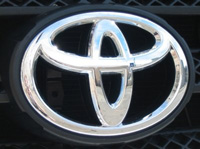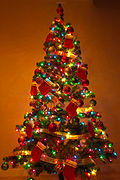Posts Tagged ‘“Boston injury lawyers”’
Trouble in Toyland Report Shares Toy Safety Tips for Holiday Shoppers
 Families often enjoy looking through toy catalogs together this time of year. After seeing what excites your child, you may be tempted to immediately order their holiday gifts. However, before you do, we encourage parents and grandparents to check the Trouble in Toyland report.
Families often enjoy looking through toy catalogs together this time of year. After seeing what excites your child, you may be tempted to immediately order their holiday gifts. However, before you do, we encourage parents and grandparents to check the Trouble in Toyland report.
The 35th anniversary Trouble in Toyland report was recently released. This year, U.S. PIRG warned about the dangers of:
- Mislabeled choking hazards
- Flocked animal figures (toys with small attached pieces)
- Recalled toys which may still be available online
- Noisy toys
- In-app purchases
- Not advisable for children
Choking Hazards
Parents are advised to look for small part warnings on toys. “Small part” is not a subjective term. It is anything that fits within the Consumer Product Safety Commission’s toy test cylinder. The test cylinder measures 2.25 inches long and 1.25 inches wide and is roughly the size of a young child’s throat. A small part may be a game piece or a marble of the right size. It may also include a toy accessory, such as doll clothing.
The most common “small parts” warning: “WARNING: CHOKING HAZARD–Small Parts. Not for children under 3 years.” Toys designed for children ages 3 through 6 must also carry warning labels indicating they are not safe for children under 3.
Parents can become familiar with the risks by reading this year’s Trouble In Toyland. Make it a priority not to purchase a product with small parts and bring them into your home. Always read toy safety and age appropriate labels. Doing so puts you on a path to protect your family.
Flocked Toys
If you purchase a toy figurine or doll that comes with accessories, such as ribbons or clothing, remember your child can put those small parts in their mouths. Calico Critters – the popular animal family figures – are now under scrutiny.
One child was killed while playing with a set containing a small pacifier in New Mexico, according to a court filing. Another child in Utah also choked on the pacifier accessory, according to the a local news website, and shared in the Trouble in Toyland report. Both children were under 3 years old.
Fortunately, there are many versions of toys. If you find a toy you like and it has small fabric parts, keep looking until you find one without removable accessories.
Online Toy Shopping
Trouble in Toyland shared a valuable insight about searching for holiday toys on Amazon. If you search for “toys for 2-year-old boys,” for instance, you may see a number of listings which do not provide a small part warning. Do not trust that searching by year means toys are screened for safety. Remember, Amazon is a marketplace of merchants, not just one company. Closely look at product descriptions before making a purchase. In addition to reading reviews, you want to confirm the details. Look at the product picture, then read the description. Double check the product packaging once it arrives by mail and open it to confirm it has the parts you expected.
Beware of recalled toys as well. Since the 2019 Trouble in Toyland, the Consumer Product Safety Commissioned issued 10 toy recalls in the U.S., according to this report. When a product is recalled, it should be immediately removed from the store shelves and online listings. Some toys were still being sold online after recalls. Researchers even found one toy – a Fisher-Price Barbie Dream Camper which was recalled in February 2019 – still on sale. The camper was an outdoor riding toy for children. The CPSC received 17 reports of campers continuing to travel after the foot pedal was released.
Not Advisable For Children
Also featured was a section called, “items not advisable for children.” These items are not really toys, but are given to children as toys. At the top of the list is high-powered magnet desk sets. We wrote about the dangers of high-powered magnet sets last holiday season. Magnet sets may seem like fun gifts for adults, but you should never purchase one because they are so dangerous and the small parts can stick around your home forever. Children can be tempted to play with these magnets and swallow them. At this point, the magnets can attempt to connect together in a child’s stomach. The magnets touched on some serious personal injuries.
In September 2020, a 9-year-old boy took two magnets from a Neutronball building set and placed them on his lip, pretending to have a piercing. He then swallowed them and had to seek medical treatment at a hospital. In May, another 9-year-old swallowed parts from a Zen Magnets LLC set. She hid this from her parents for a week, until she began suffering intense stomach pain. She required surgery, but survived.
Beware of Digital Apps
Parents may be asked to sign up for an app related to a “smart toy” their child received as a gift. Or a child may have received a tablet or cell phone and try to sign up for apps themselves.
While there is a case to be made for limiting your child’s screen time overall, beware of giving your child access to digital apps. These can be tempting and children may like the graphics and thought of winning a prize. The Trouble in Toyland report mentioned one app called Coin Master. This is rated for ages 13 and over, though the graphics may easily capture the attention of a younger child.
We are sharing this story because Coin Master offers in-app purchases. The most expensive option is $99.99. Children may only see higher options once they get into the game.
Free Legal Consultation – Boston Toy Safety Lawyers
Breakstone, White & Gluck has over 100 years combined experience representing individuals who have been injured by the negligence or wrongdoing of others. Our firm is highly experienced in the area of product liability and injuries caused by defective products. We are writing about holiday toy safety as part of our Project KidSafe campaign, where our goal is to protect children from injuries. For the past 8 years, our attorneys have also donated 30,000 bicycle helmets to children across Massachusetts to protect against head injuries.
If you have been injured, learn your legal rights. For a free legal consultation, contact Breakstone, White & Gluck of Boston at 800-379-1244 or 617-723-7676 or use our contact form.
Will Toyota Criminal Penalty Improve Safety?
 Toyota agreed last week to pay a record $1.2 billion criminal penalty for misleading consumers and the government about unintended acceleration in its vehicles. This safety defect and others have resulted in numerous injuries and deaths. Over 10 million Toyota vehicles have been recalled so far.
Toyota agreed last week to pay a record $1.2 billion criminal penalty for misleading consumers and the government about unintended acceleration in its vehicles. This safety defect and others have resulted in numerous injuries and deaths. Over 10 million Toyota vehicles have been recalled so far.
This is the largest criminal penalty ever imposed on a car manufacturer. As part of the agreement, the Justice Department charged Toyota with wire fraud but deferred the criminal charge for three years while the company submits to government monitoring.
We have been reading about Toyota’s safety defects for many years now, along with the more important violation of trust: the Japanese automaker repeatedly failed to warn the public about safety problems. CNN reported last week that the company “at one point boasted internally about saving $100 million in costs by avoiding a full safety recall.”
To date, Toyota has paid out more than $66 million in fines for not immediately reporting defects. Several of these fines have been record-breaking. In 2010, the National Highway Traffic Safety Administration fined the company a record $16 million for its delayed response in notifying the government about defects. In 2012, the NHTSA fined the company an additional $17.4 million.
The company has faced numerous injury and wrongful death lawsuits. In addition to sticky pedals and unintended acceleration, unsecured floor mats and other equipment have caused safety hazards. Last October, an Oklahoma jury decided that defective electronics were to blame for a car accident which killed a woman and seriously injured another person. Toyota was ordered to pay $3 million in damages.
As for Toyota, U.S. Attorney General Eric Holder told the Detroit Press: “Put simply, Toyota’s conduct was shameful. It showed a blatant disregard for systems and laws designed to look after the safety of consumers. By the company’s own admission it protected its brand ahead of its own consumers.”
Still, consumers have continued to buy Toyota. The company was the top-selling automaker in 2012 and 2013, selling 9.98 million vehicles in 2013.
Related:
Toyota to pay $1.2 billion in settlement with U.S. over recalls, CNN.
Read More
Decorating Safely for the Holidays
 While it is the most wonderful time of the year, the holiday season is also a prime time for home fires.
While it is the most wonderful time of the year, the holiday season is also a prime time for home fires.
In Massachusetts, from 2002 to 2007, Christmas Day saw the second most number of residential fires of any day while Christmas Eve ranked ninth, according to the Office of the State Fire Marshal. The majority of these fires can be prevented with planning and awareness.The Boston injury lawyers at Breakstone, White & Gluck offer these tips to help you and your family enjoy the season safely:
Christmas Tree Watering
- Do not pick up your Christmas tree immediately after Thanksgiving.
- Make sure you have an adequate size tree water stand.
- Learn how much watering your tree needs. In general, you should use one quart of water per day for each stem diameter. Ask your local fire department for more instructions.
- Remove your tree in a timely manner to avoid letting it dry out. Many communities offer special Christmas tree pickups after the holiday.
- Another option is to cut up your tree branches and place them over a garden.
- Do not leave your tree outside unattended overnight for teenagers and vandals to find.
Christmas Tree Holiday Lights
- Keep your tree at least three feet away from flame or heat sources, such as fireplaces and radiators. These pose a fire risk and will dry out your tree faster.
- Never put candles on or near your tree.
- Check your Christmas tree lights for broken bulbs. If one is damaged, remove the whole string to avoid a fire accident.
- Make sure your Christmas tree lights are designed for indoor use.
- Unplug Christmas tree lights when you leave the house or go to bed.
- Check if your Christmas tree lights have been tested for safety by a nationally recognized laboratory. If they have, they will be marked ETL, UL or CSA.
- Do not put too many lights on your tree. Check the box for the appropriate number of strings.
- Place your tree near a power outlet to reduce use of extension cords. Make sure extension cords have been marked UL to show they have been tested.
- If you have an artificial tree, check to see if it has the label “Fire Resistant.”
Holiday Candles
- Use sturdy candle holders with flame-protective and non-combustible shades or globes.
- Never leave burning candles unattended.
- Place burning candles in the center of tables.
- Place burning candles at least four feet away from curtains, bedding and other flammables.
- Keep candles and matches away from children.
- When lighting candles, secure hair and clothing away from candles to prevent injuries.
- If you are lighting multiple candles, make sure you are aware of how much heat they generate.


